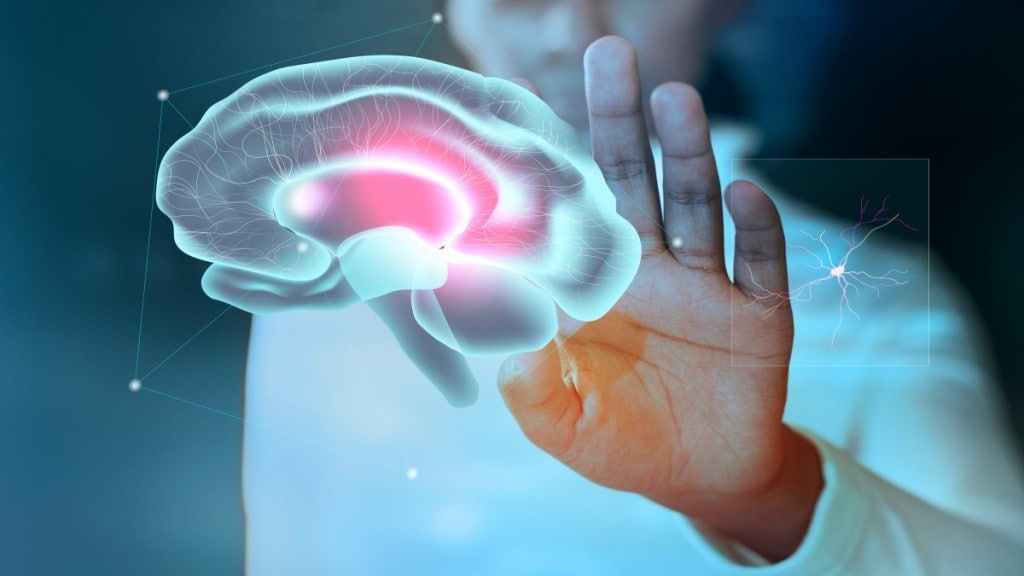By Siddharth Pai,
Imagine controlling a computer with nothing more than your thoughts. Or better yet, imagine asking Alexa to turn on the lights — not with your voice, but with a direct mental command. This may sound like science fiction, but it’s rapidly becoming the science of today. Brain implants are paving the way for revolutionary technologies that allow people with disabilities to interact with the world in ways previously thought impossible. For paraplegics and others with similar conditions, this could mean regaining autonomy over their lives, including communication, mobility, and everyday tasks.
At the heart of this innovation is a field called brain-computer interfaces (BCIs). These devices, once the stuff of futurist speculation, show real-world potential in restoring communication, control, and even sensation for those with physical limitations. The most exciting recent breakthroughs involve pairing BCIs with digital assistants like Alexa and Siri to offer seamless interaction and accessibility.
Brain implants work by interpreting the brain’s electrical activity. Neurons communicate via tiny electrical impulses, and BCIs capture these signals using microelectrodes implanted in the brain. These signals are decoded and translated into commands controlling external devices, such as computers, robotic limbs, or home appliances.
This technology can offer profound benefits for paraplegics who have lost the ability to move or control parts of their body due to spinal cord injury or disease. The brain can send movement-related commands, but the severed spinal cord prevents these messages from reaching their intended targets, like the arms or legs. BCIs step in, essentially bypassing the damaged pathways and providing a new communication channel.
One of the most striking advancements has been BCIs’ ability to integrate with digital assistants. Companies like Neuralink (founded by Elon Musk), Synchron, and Blackrock Neurotech are at the forefront of developing BCI technology that could soon allow people with paraplegia to control smart home devices and communicate digitally by simply thinking. In 2021, Synchron, an emerging leader in the field, successfully implanted their device in the brain of a man with amyotrophic lateral sclerosis (ALS). This degenerative disease gradually robs people of muscle control, including the ability to speak. The implant allowed him to send text messages using only his thoughts. This device, known as the Stentrode, is less invasive than many other brain implants, threading a small electrode-laden stent into the brain via blood vessels. Once in place, it captures the electrical impulses corresponding to movement or intent and translates them into digital signals.
Now, Wired magazine reports that Synchron has, on an experimental basis, been able to seamlessly allow paraplegics who volunteered to command both their phones and Alexa to help them operate phones, tablets, and computers with their thoughts to surf the internet or compose emails. With the Amazon integration, they can control Alexa with a Fire tablet to turn the lights on and off at home, watch TV, make video calls, play music, control their Ring security camera, read books on Kindle, and shop on Amazon (bit.ly/47DHrJn).
This isn’t just a convenience; for paraplegics or individuals with locked-in syndrome — where they cannot move or speak at all — this technology represents a lifeline to independence.
For many paraplegics, the most pressing challenge isn’t just regaining control over their environment but re-establishing communication. ALS and similar conditions often leave individuals trapped inside their bodies, fully conscious but unable to move or speak. BCIs offer an elegant and profound solution: a direct mental connection to a computer that can express their thoughts.
Similarly, BCIs can allow paraplegics to control motorised wheelchairs or robotic arms. By envisioning the movement, the brain’s motor cortex sends out signals interpreted by the implant and converted into real-world actions. This ability can grant mobility, another crucial aspect of independence, to those who have lost it.
Integrating BCIs with AI-driven digital assistants is a natural next step in improving accessibility. While digital assistants are already widespread — controlling everything from lighting to reminders in modern homes — they require voice commands or touch inputs, both of which may be inaccessible to people with physical disabilities. By linking BCI systems directly with these assistants, users can think their commands instead. This provides a remarkable degree of independence in everyday life.
Furthermore, digital assistants’ conversational nature adds a social layer to the technology. Instead of relying on caregivers for every small task, paraplegics and others with motor impairments can engage directly with the world around them — on their terms.
While the promise of brain implants is enormous, there are challenges to overcome. Decoding brain signals is still an imprecise science. The brain generates vast amounts of data, and distinguishing the correct signal from background noise can be difficult. Moreover, ethical concerns surrounding the invasive nature of implants and the potential for misuse of personal neural data remain hotly debated topics.
As BCIs advance, developers are also focused on making the devices more reliable, long-lasting, and less invasive. The Neuralink device, for instance, aims to be fully wireless and minimally invasive, using flexible threads inserted into the brain by a precision robot. This could make the technology safer and more accessible for widespread use.
The merger of brain implants and digital assistants paints an exciting picture for the future. For paraplegics, these technologies provide a crucial pathway to regaining control over their environment, enhancing communication, and restoring a sense of agency. The ability to control devices purely by thinking is an extraordinary leap forward — not just in accessibility but in what it means to be human in a digital age.
As research progresses and technology becomes more refined, the prospect of a world where paraplegics can communicate, control, and interact with their surroundings as easily as their able-bodied peers is no longer a distant dream but a soon-to-be reality. Cheers to that!
Siddharth Pai is a Technology consultant and venture capitalist.
Disclaimer: Views expressed are personal and do not reflect the official position or policy of FinancialExpress.com Reproducing this content without permission is prohibited.

